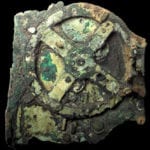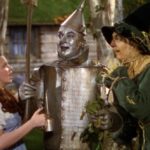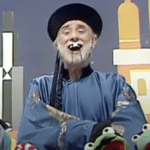 Weird Stuff
Weird Stuff  Weird Stuff
Weird Stuff  Animals
Animals 10 Inspiring Tales of Horses Being Human
 Mysteries
Mysteries Top 10 Haunting Facts About the Ghost Ship MV Alta
 History
History 10 Surprising Stories About the Texas Rangers
 Humans
Humans 10 Philosophers Who Were Driven Mad by Their Own Theories
 Miscellaneous
Miscellaneous 10 Video-Game-Worthy Weapons and Armors from History
 Weird Stuff
Weird Stuff 10 Psychics Who Accurately Predicted Wartime Events
 The Arts
The Arts 10 Pieces of Art Inspired by a Broken Heart
 Health
Health 10 Science Fiction-Sounding New Medical Treatments
 History
History 10 Surprising Facts About the Father of Submarine Warfare
 Weird Stuff
Weird Stuff 10 Times Real Laws Were Based on Bizarre Hypotheticals
 Animals
Animals 10 Inspiring Tales of Horses Being Human
 Mysteries
Mysteries Top 10 Haunting Facts About the Ghost Ship MV Alta
Who's Behind Listverse?

Jamie Frater
Head Editor
Jamie founded Listverse due to an insatiable desire to share fascinating, obscure, and bizarre facts. He has been a guest speaker on numerous national radio and television stations and is a five time published author.
More About Us History
History 10 Surprising Stories About the Texas Rangers
 Humans
Humans 10 Philosophers Who Were Driven Mad by Their Own Theories
 Miscellaneous
Miscellaneous 10 Video-Game-Worthy Weapons and Armors from History
 Weird Stuff
Weird Stuff 10 Psychics Who Accurately Predicted Wartime Events
 The Arts
The Arts 10 Pieces of Art Inspired by a Broken Heart
 Health
Health 10 Science Fiction-Sounding New Medical Treatments
 History
History 10 Surprising Facts About the Father of Submarine Warfare
10 Childhood Icons That Are Far From Innocent
One of the worst parts of adulthood is noticing all the death and destruction around us. When we need some comfort, we can always turn to the precious memories of childhood to brighten our day.
However, even those can be tainted by the problems of the real world. The only thing worse than realizing your favorite kids’ movie is not as good as you remember is finding out that it has a body count.
10 E.T. Was How Steven Spielberg Coped With Anti-Semitism
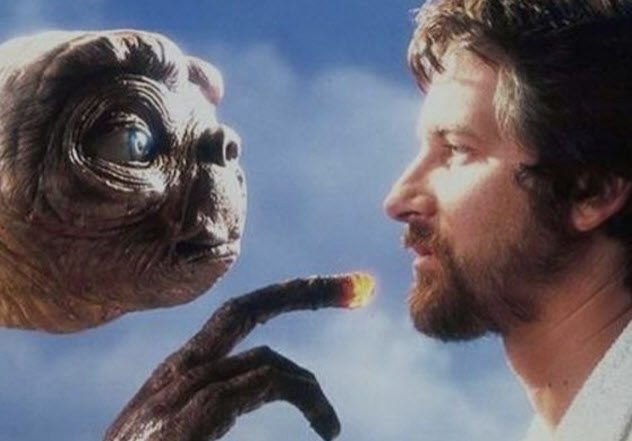
Elliott and E.T. are one of the most iconic cinematic duos of all time. For many kids, one of their first heartaches is watching E.T. leave Elliott for his home planet at the end.
However, the couple’s story was already a tearjerker before it hit the big screen. The idea of a kid befriending an alien came from Steven Spielberg’s own troubled past. Ironically, the man who shaped millions of childhoods had a terrible one himself.
When Spielberg went to school, he was constantly bullied for his Judaism. Spielberg and his family were the only Jewish family in their neighborhood. He was mocked with chants that “the Spielbergs are dirty Jews.”
In high school, Spielberg was physically beaten because of his religion, suffering from two broken noses. He tried to deny his faith and pretended that his last name was German and not Jewish, causing much emotional strain for his family.
Without any real friends to turn to, Spielberg created an alien as an imaginary companion. Spielberg said that this alien “could be the brother I never had and a father that I didn’t feel I had anymore.” As one of his few sources of childhood comfort, Spielberg used the memory of his fictional friend to create E.T. decades later.[1]
9 The Death Of J.K. Rowling’s Mother Created Harry Potter

The Harry Potter series has a taught a new generation the love of reading. It’s a shame that they just have to start with a double homicide and attempted baby murder. It should be no surprise that the Harry Potter universe is concerned with death. Hardly a spoiler, death is everywhere in the series.
Voldemort wants to avoid death and lives off killing unicorns. Lily’s death drives Snape across the series. If you just kept the chapters where no one dies, the books would only be three pages. The constant references to death were J.K. Rowling’s coping mechanism for her personal struggles.
While riding on a train in 1990, the idea of a wizarding school for kids hit her all at once. The fun and magical setting became darkened as she thought of her mother. Rowling was only 25 when her mother died after years of suffering from multiple sclerosis.[2]
Rowling has since claimed that the current version of Harry Potter would not exist if her mother had survived after the first book was published. Rowling said, “If she hadn’t died, I don’t think it’s too strong to say that there wouldn’t be Harry Potter.”
After her mom died, Rowling had a very brief stint of happiness. She got married and had one daughter. Then she got divorced, lost her job, and even contemplated suicide. This rough period inspired Rowling again. She turned the ever-present specter of misery into one of the franchise’s most famous creations, the Dementors.
8 Goodnight Moon Funded A Drug Addiction And Kidnapping Attempt
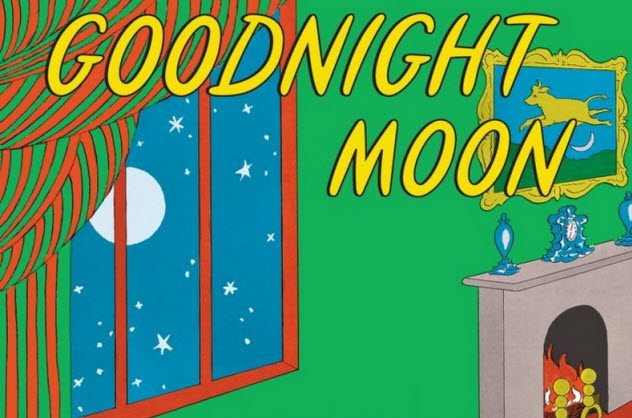
For generations, children have been transfixed by the riveting tale of a bunny saying goodnight to socks, combs, and air. Despite the simplicity of the story, Margaret Wise Brown’s Goodnight Moon is hailed as one of the greatest children’s books of all time. Sixty-five years after it was first published, the School Library Journal ranked it as the fourth-greatest picture book of all time.
The book was a huge success in Brown’s tragically short lifetime. When she was only 42, Brown went to a hospital for an appendectomy. To demonstrate to the nurses that she was in great health, she danced a can-can. Far from proving a clean bill of health, the dance triggered an embolism that killed her instantly. When Brown said “goodnight” for the last time, she did not have any kids of her own to whom she could leave her literary fortune.
In her will, she left the royalties to Goodnight Moon and her other books to Albert Clarke, a young boy who lived in an apartment building by her home. Clarke and Brown became friends when he was only seven. Later, he claimed that Brown was his biological mother, but there’s no evidence to support this.
When he turned 21, Clarke received his first paycheck for $75,000. Over the next years, the constant flow of money funded many of Clarke’s problems, including his drug troubles. As the drug problems divided his family, he lost his kids. To get his kids back, he tried to kidnap them. His criminal exploits left him estranged from his family, and he has struggled to get by ever since.[3]
7 The Magic Slate Exists Due To Solicitation Of A Minor
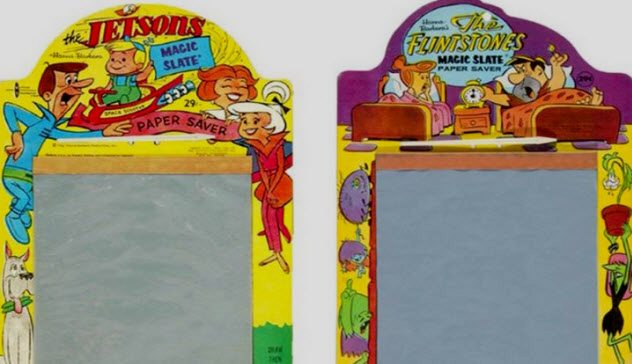
If there’s one thing that toys should not do, it’s to remind people of child molestation. For most toys, that would be the end of their success. For the Magic Slate, that was how it all began.
In the early 1920s, R.A. Watkins owned a printing plant in Aurora, Illinois. He was approached by an inventor who presented a quick-erase memo pad. Watkins did not initially take to the idea because he thought it would upset the demand for paper. He was given a night to think about it.
That night, however, the inventor had different plans. He solicited sex from a minor and then took her across state lines. He was arrested later that night. The inventor called Watkins with a proposition. In exchange for paying the bail money, the inventor would give Watkins the rights to the Magic Slate.[4]
The Magic Slate sat dormant for a while, although it did appear as a prize in Cracker Jack boxes. However, it did not really take off until after World War II. When resources were scarce, the cardboard and tissue toy naturally did not require much to be mass-produced. With a license from Disney, the toy became a baby boomer favorite.
The Magic Slate also became a favorite of Cold War–era senators. In 1987, Representatives Dan Mica (D-Florida) and Olympia J. Snowe (R-Maine) were ordered by the State Department to take the toys with them on a tour of the US Embassy in Moscow. Thanks to the Magic Slate, they could write messages and have them disappear with a flick of the page.
6 The Noid Inspired A Hostage Crisis
Between pizza and cartoons, it’s no wonder that the Noid was one of the favorite fast-food icons of the 1980s. Although the lifetime of most advertisements is the few seconds they flash on the TV screen, kids were obsessed with the Noid, the Domino’s Pizza mascot.
The Noid was plastered on T-shirts and featured in two different video games. There were even talks of a Noid-driven television series. But the Noid’s fame was only good for 30 minutes or less. The marketing empire swiftly ended in 1989.
While America was obsessed with this pajama-clad rabbit, they kept shouting the advertisement’s slogan of “avoid the Noid.” In Atlanta, a mentally ill man named Kenneth Lamar Noid took this slogan to heart. He thought the company was personally targeting him and decided to fight back.
In 1989, he barged into a local Domino’s and held two employees hostage for five hours. He demanded that the company pay him $100,000 and a complimentary pizza for his troubles. He got his pizza. But instead of a small fortune, he was sent to a mental institution.[5]
In response to the disaster, Domino’s ended the ad campaign. Never able to shake the paranoia caused by the ads, Kenneth Noid killed himself in 1995.
5 Crocodile Dundee Ruined The Man On Which He’s Based
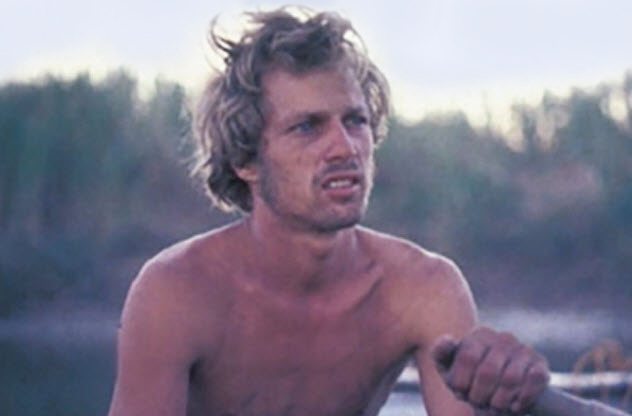
The bawdy and rowdy 1986 classic Crocodile Dundee may have turned Paul Hogan into a household name, but it destroyed the man who inspired the character. Paul Hogan based the character on Rod Ansell, an outdoorsman who did not have the best life to begin with.
In 1977, Ansell survived two months in the Australian Outback by shooting sharks and drinking buffalo blood. His exploits entertained the country in the 1970s. When he was interviewed by Michael Parkinson, Ansell said that he preferred the bush over the comforts of modern society. Paul Hogan modeled his character on the information in that interview.
Crocodile Dundee made more than $300 million at the box office, but Ansell never saw any money from it. In fact, he ended up losing money over the film. The production company banned him from promoting his cattle business as owned by the “Real Crocodile Dundee.”
As he sunk money into securing the rights to advertise his cattle station, Ansell was unprepared to fight an invasion of toxic weeds. Finally, a shortage of cash forced him to sell his cattle station in the early 1990s.
He spent the small amount of money left on his drug addiction. These drugs all but destroyed his brain. He had delusions about the Freemasons kidnapping his sons and stalking him. Driven mad by the drugs, he died in a shoot-out with the police. He had reached for an officer’s gun and killed the policeman on the scene. In the ensuing manhunt, Ansell was shot dead himself.[6]
4 Peter Pan’s Obsession With Youth Is Based on J.M. Barrie’s Dead Brother And Possible Pedophilia
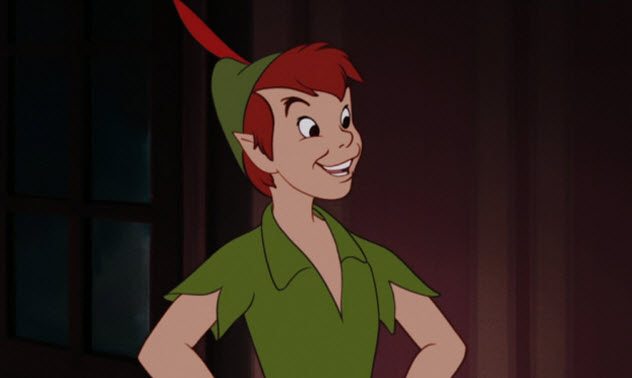
Peter Pan is the quintessential story of never wanting to grow up and keeping your childhood innocence forever. In forms as varied as the book, the Disney classic, and even Hook, the story has been repeated for centuries. As fantastical as the book is, there was a real kid who never grew old, not from magic pixie dust but a fatal accident.
In 1867, author J.M. Barrie’s older brother David was struck by an ice skater. He fell, cracked his skull on the ice, and died. Recent authors have suggested that J.M. Barrie may have been the ice skater in question.
No matter the culprit, Barrie’s mother sank into depression. To console her, Barrie dressed up in his dead brother’s clothes. His mother’s only solace was that David would be a child forever. This started Barrie’s obsession with childhood and youth. In later years, this would take on a far darker interpretation.[7]
In the book Captivated: J.M. Barrie, the Du Mauriers and the Dark Side of Neverland, Piers Dudgeon makes the case that Barrie may have been a pedophile. Though this has been debated for years, Barrie did have a rather bizarre relationship with three children—George, Jack, and Peter Llewelyn Davies.
After the boys’ parents both died of cancer, Barrie forged the will so that he could become their guardian. As their guardian, he would often take photographs of the boys naked. This relationship would serve as the inspiration for Barrie’s book, The Little White Bird, in which Peter Pan first appears.
The Llewelyn Davies boys were the only real relationships Barrie ever had. Supposedly, he never even consummated his marriage to Mary Ansell. In the end, all the Llewelyn Davies children met untimely ends. George was shot in the head during World War I, and both Michael and Peter committed suicide.
3 Beanie Babies Destroyed And Ended Lives
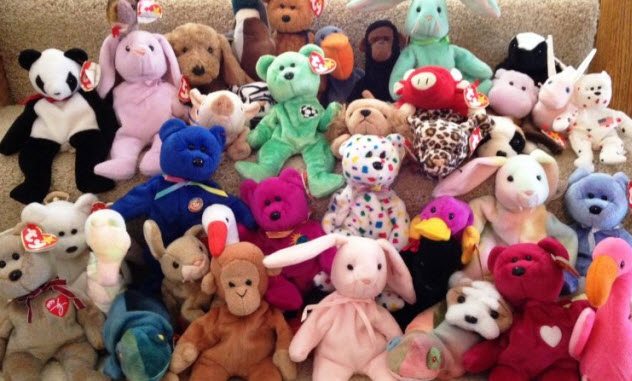
If you weren’t there, it is hard to explain how obsessed people were over Beanie Babies. People believed that these stuffed animals that were being pumped out by the millions were somehow a rare commodity. These toys were treated as investments as solid as bonds. In the end, the bubble burst. The playthings’ only real value was the joy they brought children and nothing else.
People lost fortunes gambling on the market value of the toys. For example, Chris Robinson, who made a name for himself playing Dr. Rick Webber on General Hospital, was convinced that Beanie Babies were going to take off. Between roles, Robinson invested $100,000 in Beanie Babies, thinking they could pay for his kids’ college educations. Instead, his family went bankrupt after wasting thousands on a collection of over 20,000 Beanie Babies.
Chris Robinson got off lucky compared to the tragic fate of Jeffrey White. In October 1999, White met with coworker Harry Simmons to trade Beanie Babies. The two started arguing over the prices of the toys. The fight ended when White shot and killed Simmons. The Beanie Babies were only worth $150.[8]
In prison, White became violent to lose the name “the Beanie Baby killer.” But to no avail. Simmons’s life was ended and Jeffrey White’s life was ruined for a fad that stopped two years later.
2 The Success Of The Land Before Time Led To A Murder-Suicide
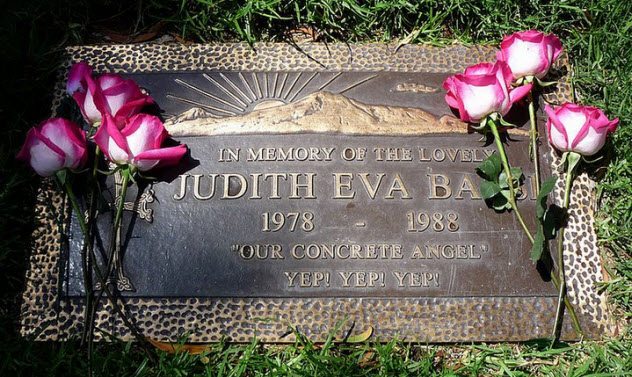
In her shockingly short-lived career, Judith Eva Barsi voiced two childhood icons, Ducky in The Land Before Time franchise and Anne-Marie in All Dogs Go To Heaven. Both characters are fondly remembered from the 1980s for their optimism in the face of adversity. Sadly, Judith Barsi’s life was far more tragic than those of her animated counterparts.
Judith had many bit roles in the early ’80s in televisions shows and films as varied as Punky Brewster, Cheers, St. Elsewhere, and even Jaws: The Revenge. Her first big break was in The Land Before Time franchise.
At only seven, Judith was making $100,000 a year. This was a huge relief to her parents, who were struggling on welfare. As she was so young, Judith had no control over how her money was spent. Her father wasted most of his daughter’s income on his crippling alcoholism.
As Judith’s career grew, so did her father’s bank account and bar tab. Her mother feared that her husband’s alcoholism could no longer be contained. He started abusing his wife and daughter and making death threats against them.
Mother and daughter moved to a different home to put some distance between them and their increasingly belligerent husband and father. That decision only made matters worse. On July 27, 1988, it was discovered that Judith’s father had broken into his ex-wife’s new house. He shot Judith and then her mother. Finally, he burned down their house and turned the gun on himself.
One year later, All Dogs Go to Heaven was released. As the credits rolled, the song “Love Survives” played. The song and the film were dedicated to Judith’s memory. In 2004, a marker was added to her previously unmarked grave. In a touching tribute to her voice work, her tombstone reads, “Yep Yep Yep!,” her catchphrase from The Land Before Time.[9]
1 Sea-Monkeys Funded The Aryan Nations
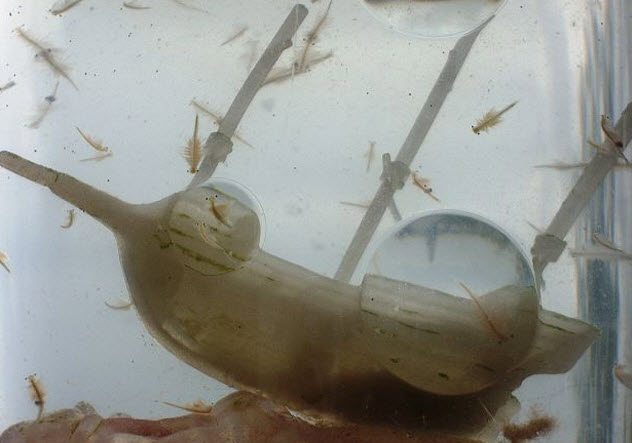
It is hard to understand Harold von Braunhut’s legacy. For the millions of baby boomers who scoured the backs of comic books for the latest novelty gag like the Invisible Goldfish or X-Ray Spex, he was an essential part of their childhood. For those who watched as his sea-monkeys failed to build miniature civilizations, they were one of the first childhood disappointments. Either way, von Braunhut was hailed as a titan of kitsch.
One of von Braunhut’s lesser-known inventions was the Kiyoga Agent M5. This was a coil-springed weapon that unleashed a metal whip at the push of a button. Shockingly, this weapon was marketed in comic books, exactly like his other cheap gimmicks.
But the Kiyoga Agent M5 was no toy. This weapon was built specifically for people who could not get a license for a gun, which is why the weapon was so popular with the Aryan Nations, a white supremacist group. The Kiyoga featured prominently in their fundraising literature.
Von Braunhut’s relationship with the hate group was more than strictly business. He attended rallies, lit crosses, and distributed his anti-Semitic pamphlet. From the sizable fortune he made selling sea-monkeys, he bought weapons on behalf of the Ku Klux Klan.
In one last twist, it was later discovered that von Braunhut was Jewish.[10] He built an empire from joy and squandered it for hatred. Whether this was his last gimmick—or if he believed any of it—is impossible to know.
That list sure was depressing. If you have any questions or comments, you can email Nate at [email protected]. If you want something a little more light, you can follow him on Twitter.
If you want to question even more of your childhood choices, check out 10 Facts That Will Ruin Your Childhood Memories and 10 Curious Facts About Your Favorite Childhood Authors.




